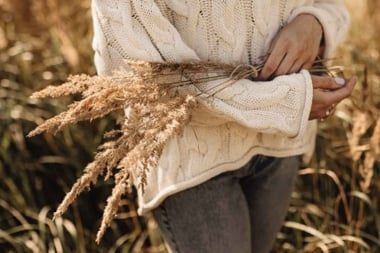
Environmentally friendly coffee results from sustainable coffee farming practices. Discover what goes into a cup of eco-coffee.
Can’t face the morning without your cup of coffee? You’re not alone. Coffee is big business and has as much impact on the environment as it does on your taste buds.
Coffee plants love tropical areas in Central and South America, Africa, and parts of southeast Asia where even temperatures, stable sunlight, and optimal rainfall create natural greenhouses perfect for coffee production.
Unfortunately, to meet increasing world demand, some coffee growers have been cutting down rainforests to create sun farms to increase their planting acreage, while relying heavily on chemical fertilizers to speed up the ripening process.
The result? Environmental problems have increased while coffee bean quality has decreased. Luckily for coffee connoisseurs and environmentalists, that’s changing. You can be part of that change.
Sustainable farming practices
There are now a number of worldwide certification programs and fair trade initiatives that cover the coffee industry. These programs emphasize traceability from producer through to retailer, with a clear chain of custody to make sure the processes are being followed by all the players. (See “Eco-coffee Terms” below for more information about these organizations and terminology.)
At the producer end, these programs have one goal in mind: to make coffee production sustainable, while allowing farmers to earn a fair wage. To achieve this goal, the organizations encourage farmers to maintain ecologically sound shade-grown farms.
In a review of over 50 studies, the Smithsonian Migratory Bird Center compared natural forest, shade-grown, and sun-grown coffee production. While shade-grown coffee farms compare very favourably with natural forests, sun farm systems were destructive and unsustainable.
Through research and education projects, farmers are also being encouraged to incorporate better farming methods and water and soil conservation techniques through a system of continuous improvement. Examples of sustainable practices include terracing, installing water filtration systems to clean water used in processing before returning it to local streams, and turning coffee pulp into compost.
By working with nature rather than against it, these coffee farmers are turning coffee into a sustainable, higher yield, and better-tasting crop.
From crop to cup
Research, education, and implementation of green practices don’t come cheap. That’s where roasters, retailers, and suppliers come in. Royalties paid to certification bodies and membership fees in organizations such as the Coffee Association of Canada (CAC) help fund research and education in best farming practices.
Members of CAC forge partnerships with coffee growers and co-ops. They support programs to improve agricultural practices and conservation methods, prepay for coffee crops during the growing season to help farmers finance the harvesting and handling of beans, and assist farmers in purchasing needed equipment.
Other initiatives include paying fair compensation and working with coffee growers on health and education programs to benefit farmers, workers, and their communities.
Some exporters and suppliers ship their beans on airlines that offer carbon offset services, which in turn fund climate protection projects. And they’re taking marketing right to retailers and consumers by hosting coffee activities, tasting events, and education sessions.
That’s where consumers come in. By increasing your awareness and demand for certified shade-grown, organic, and fair trade coffee, you’re supporting these farmers. And you’re being heard. Check out your local health food store and you’ll see eco-brands such as Sierra Las Minas, Doi Chaang, Salt Spring Coffee, and many others.
Coffee beans are small but, as the second most traded product in the world after oil, they have a huge footprint. According to a 2010 Ipsos Reid poll, nearly 90 percent of Canadians drink coffee daily, averaging three cups a day, or more than 15 billion cups annually.
That means fair trade and green initiatives in coffee production, export, and retail have a huge impact on the environment and the people who raise this crop. Check your coffee’s label. If it has an eco or organic certification, buy it with pride.
Then sit back and enjoy a cup of sustainable coffee. You’ve earned it.
Advantages of shade-grown coffee farms
Improved soil protection and erosion control
Trees’ deep root systems, leafy canopy cover, and leaf litter stabilize slopes, reduce surface run-off, maintain soil moisture, and add nutrients to the soil.
Carbon binding
Trees retain carbon, helping buffer the effects of global warming.
Increased bee diversity
More bee species mean better pollination and more fruit per coffee plant.
Increased biodiversity
Birds, lizards, bats, and beneficial insects act as biological pest controllers that feed on otherwise harmful insects, eliminating the need for chemical pesticides.
Eco-travel through coffee country
What better way to see sustainable coffee in action than by visiting coffee-growing countries? From Guatemala to Kenya, Costa Rico to Laos, Ecuador to India, eco-tours are becoming a great way to combine a love of coffee with a love of the environment.
Along with having a memorable trip, you’ll be supporting local coffee growers and their communities. Tourist dollars help farmers pay workers a better wage, which means more farms can remain in production. Abandoned farms are more likely to become infested with insects, which then infest working farms, ruining their coffee crop.
Some coffee farms offer eco-tours that combine history, culture, ecology, and coffee. For example, Sierra Las Minas Coffee (sierralasminascoffee.com), a fourth-generation family coffee plantation in Guatemala, offers an eight-day eco-tour developed in association with Marcy Lee McLellan, an experienced travel guide.
Giovanni De Paz, great-grandson of the plantation’s founder, runs the Calgary retail operation and the tours. “Our goal is to create a sustainable coffee culture,” says De Paz. “Our tour combines sightseeing with a trip to the family farm. You’ll get exercise while exploring the rainforest’s ecosystem and biodiversity and learn about shade-grown coffee production. You’ll also dine on fresh organic fare and participate in coffee tastings.”
In some countries, you may find yourself integrated into the life of active farmers, getting a truly hands-on approach to coffee. Depending on where and when you go, you might participate in harvesting coffee beans, or in the washing, drying, and roasting processes.
For more information on coffee plantations that offer eco-tours, check out travel guides such as Frommer’s, Lonely Planet, Moon, Fodor’s, and Let’s Go that cover many parts of the world where coffee is grown.
Eco-coffee terms
Driven by environmentally conscious organizations, growers, roasters, retailers, and consumers, the eco-coffee industry is moving toward sustainable practices. Beware of words such as “green,” “natural,” and “sustainable” on labels. Unless those words are accompanied by recognized accredited logos, they may be meaningless.
Shade grown
Shade-grown coffee is cultivated under a shade canopy of trees. In some regions farmers use complementary farming practices and plant banana, citrus, and timber trees to provide shade, and then use byproducts of those trees for their own use or for additional income. Shade-grown coffee’s slower growing cycle allows the sugars in the coffee beans to fully mature, producing a higher quality coffee with a deeper, better flavour.
Sun grown
To expand operations and speed up the growing cycle, farmers create “sun” plantations by cutting down more and more of the natural rainforest. Along with producing inferior coffee, sun farms lead to deforestation, soil erosion, extensive use of synthetic pesticides, and water pollution. Destroying native habitat affects the bird, animal, and plant populations.
Organic
To be certified organic, producers follow stringent growing practices, test soil for chemical contaminants, and document all processes. Under Canadian organic standards, this means using agricultural practices that protect the soil, minimize pollution, and use renewable rather than chemical resources. Adherence must be verified by an accredited third-party certifying body for three consecutive years before the grower can be certified.
Bird friendly
Birds don’t drink coffee, but migratory songbirds including warblers and thrush winter in traditional shade-coffee plantations. Deforestation from sun farms destroys their winter habitats, putting many species on the Audubon Society’s WatchList. In 1997 the Smithsonian Migratory Bird Center instituted a research, education, and certification program to help farmers maintain bird-friendly habitats.
Rainforest Alliance Certified
The Rainforest Alliance, founded in 1992, covers 22 tropical countries. Its mission is to promote sustainable farm management through integrating plant and wildlife biodiversity, conservation of natural resources, and good agricultural practices with continuous improvement. On the social and economic side, Rainforest Alliance promotes community development and workers’ rights and benefits.
Fair trade certified / fair farming practices
These systems give local coffee farmers a small premium above the market price of coffee, which results in a consistent living wage, improving the quality of life for them and their workers. It also allows them to reinvest profits into further sustainable growing practices for better soil and coffee plants.
For a Canadian example, there’s John Darch’s Doi Chaang Coffee Company in British Columbia (doichaangcoffee.com). Along with buying coffee at fair trade plus 50 percent from villagers in northern Thailand, he’s given them a 50 percent stake in the company.




